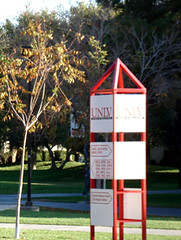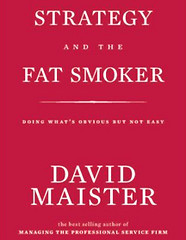“… most bloggers who have not yet established a large readership and built a solid base of well-tagged content for search engines get very distracted by all of these measurements and allow themselves to become [too] focused on these metrics …” — Alan Jobe, noting that, even so, it is still important to be aware of them.
Jobe’s comment came shortly after I asked BlogCatalog members what they thought of prevailing social media metric measures, which I asked along with presenting my I/O=ROI concept yesterday. Only a few answered, but they were the right ones.
I trust Jobe’s observaton as a seasoned blogger with two blogs, including one of my favorites, The Thin Red Line, where he reviews books. I also tend to agree with his point as well, which leads me to clarify my theory.
My dismissal of Google PageRank, Technorati authority, Alexa traffic, etc. as measures does not suggest that metrics are not part of the social media equation. They just don’t belong in the measurement column and an SEO blogger told me why.
Chris, who writes Matts Nutts, a blog dedicated to SEO and blogging (among others), understands the the various technologies better than most. And he pointed out that the aforementioned metrics can all be manipulated to get what you want. As such, they are not measures. (Chris does look at return visits, page rank, and [meaningful] links.)
I have a good example. One week ago my Technorati authority was 201; today it is 176. If this a true measure, someone might conclude our blog is in trouble (some bloggers might even panic). But the truth is that my authority was unintentionally inflated as part of David Meerman Scott’s 150 bloggers “I’m in the book!” link list. One hundred and eighty days later, those links fall off, except for the handful of participants we have since engaged on other topics.
This is the one flaw with the short-term transaction like “link love” and tagging long lists of people for no reason other than implied payback link. It serves as a short-term metric inflator, which makes Technorati a less than ideal ROI measure.
Coincidentally, my friend Geoff Livingston did something similar with his and Brian Solis’ book, Now Is Gone, but it never took off as a “I’m in the book” link list. (I’ll be reviewing their book soon; check it out on our Amazon widget.)
Of course, I am not saying that Technorati rank can be ignored as a comparative tool. All I’m saying is that this metric, like most, is better suited somewhere else in the equation. As Kevin Palmer, BuzzNetworker and Pointless Banter, offered …
“I totally agree the content has to be solid. But I see when I put an extra effort into improving one of these numbers how much it impacts traffic and thus the amount of readership I get. I question if I write too much and don't promote enough.”
This makes a lot of sense to me because it fits with strategic communication and drives home the point that some metrics, currently counted as measures, aren’t really measures at all.
They do, however, indicate reach. I think it's an important distinction for bloggers and social media professionals to make when speaking to new entrants: most metrics, on their own, are not indicative of any true value just as the number of billboards doesn't mean you have a good product and the number of political signs doesn't mean you have a good candidate. So I/O = ROI works.
Still, nothing is that easy. Mark Stoneman, a historian who authors several blogs, including Clio And Me, asked what about other variables like resources. He's right, we need something else to help I/O = ROI make sense. Perhaps this...
Social Media Equations For Business/Professional Blogs
Intent times (value proposition plus effective communication times reach) equals Outcomes.
Outcomes divided by Investment (budget plus time plus experience) equals Return (cost per outcome).
Ergo, social media metrics are part of reach and not the outcomes.
The reason is pretty simple. You can gain just as many links and traffic with a social media crisis or plea to readers as you can with something that reinforces your brand. Given that, metrics cannot be an accurate measure for business. For individual bloggers hoping for more readers, the equation may need a term adjustment.
Social Media Equations For Individual Blogs
Passion times (niche expertise plus good content times promotion) equals Readership.
Readership divided by resources (budget plus time plus knowledge) equals Influence.
In other words, pursuing social media metrics (reach/promotion) before you demonstrate expertise and solid content, as some bloggers do, only damages influence over the long term. As the old adage goes: good advertising is the fastest way to kill a bad product.
Oh, if you are wondering why I qualified individual bloggers as those who want readership vs. any blogger, it's because not all bloggers want readers. For example, I have a private and secure blog that no one outside of our extended family will ever see. The point being is that its success cannot be measured by social media metrics.
Likewise, for many bloggers, having fun is enough and sometimes that is the best measure of all. And that's why I/O = ROI works for them too.

Jobe’s comment came shortly after I asked BlogCatalog members what they thought of prevailing social media metric measures, which I asked along with presenting my I/O=ROI concept yesterday. Only a few answered, but they were the right ones.
I trust Jobe’s observaton as a seasoned blogger with two blogs, including one of my favorites, The Thin Red Line, where he reviews books. I also tend to agree with his point as well, which leads me to clarify my theory.
My dismissal of Google PageRank, Technorati authority, Alexa traffic, etc. as measures does not suggest that metrics are not part of the social media equation. They just don’t belong in the measurement column and an SEO blogger told me why.
Chris, who writes Matts Nutts, a blog dedicated to SEO and blogging (among others), understands the the various technologies better than most. And he pointed out that the aforementioned metrics can all be manipulated to get what you want. As such, they are not measures. (Chris does look at return visits, page rank, and [meaningful] links.)
I have a good example. One week ago my Technorati authority was 201; today it is 176. If this a true measure, someone might conclude our blog is in trouble (some bloggers might even panic). But the truth is that my authority was unintentionally inflated as part of David Meerman Scott’s 150 bloggers “I’m in the book!” link list. One hundred and eighty days later, those links fall off, except for the handful of participants we have since engaged on other topics.
This is the one flaw with the short-term transaction like “link love” and tagging long lists of people for no reason other than implied payback link. It serves as a short-term metric inflator, which makes Technorati a less than ideal ROI measure.
Coincidentally, my friend Geoff Livingston did something similar with his and Brian Solis’ book, Now Is Gone, but it never took off as a “I’m in the book” link list. (I’ll be reviewing their book soon; check it out on our Amazon widget.)
Of course, I am not saying that Technorati rank can be ignored as a comparative tool. All I’m saying is that this metric, like most, is better suited somewhere else in the equation. As Kevin Palmer, BuzzNetworker and Pointless Banter, offered …
“I totally agree the content has to be solid. But I see when I put an extra effort into improving one of these numbers how much it impacts traffic and thus the amount of readership I get. I question if I write too much and don't promote enough.”
This makes a lot of sense to me because it fits with strategic communication and drives home the point that some metrics, currently counted as measures, aren’t really measures at all.
They do, however, indicate reach. I think it's an important distinction for bloggers and social media professionals to make when speaking to new entrants: most metrics, on their own, are not indicative of any true value just as the number of billboards doesn't mean you have a good product and the number of political signs doesn't mean you have a good candidate. So I/O = ROI works.
Still, nothing is that easy. Mark Stoneman, a historian who authors several blogs, including Clio And Me, asked what about other variables like resources. He's right, we need something else to help I/O = ROI make sense. Perhaps this...
Social Media Equations For Business/Professional Blogs
Intent times (value proposition plus effective communication times reach) equals Outcomes.
Outcomes divided by Investment (budget plus time plus experience) equals Return (cost per outcome).
Ergo, social media metrics are part of reach and not the outcomes.
The reason is pretty simple. You can gain just as many links and traffic with a social media crisis or plea to readers as you can with something that reinforces your brand. Given that, metrics cannot be an accurate measure for business. For individual bloggers hoping for more readers, the equation may need a term adjustment.
Social Media Equations For Individual Blogs
Passion times (niche expertise plus good content times promotion) equals Readership.
Readership divided by resources (budget plus time plus knowledge) equals Influence.
In other words, pursuing social media metrics (reach/promotion) before you demonstrate expertise and solid content, as some bloggers do, only damages influence over the long term. As the old adage goes: good advertising is the fastest way to kill a bad product.
Oh, if you are wondering why I qualified individual bloggers as those who want readership vs. any blogger, it's because not all bloggers want readers. For example, I have a private and secure blog that no one outside of our extended family will ever see. The point being is that its success cannot be measured by social media metrics.
Likewise, for many bloggers, having fun is enough and sometimes that is the best measure of all. And that's why I/O = ROI works for them too.






















